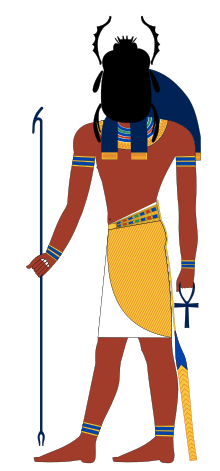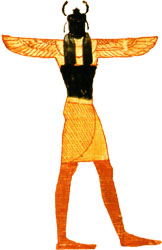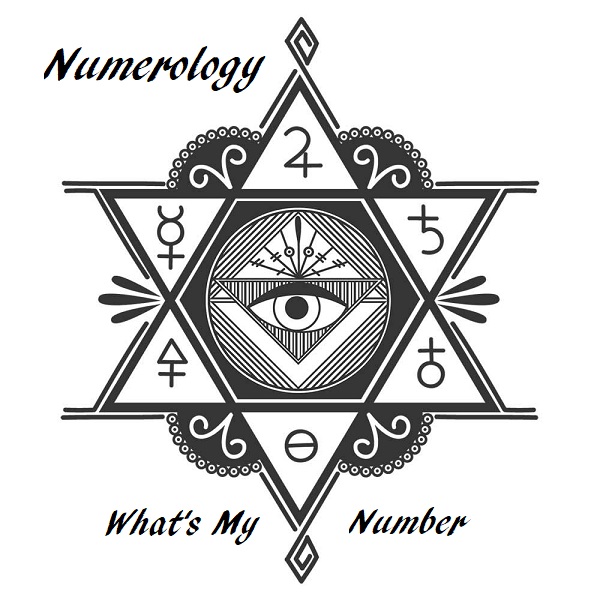Khepera (Scarab)
The Symbolic Importance and Cultural Significance

Revised 13 Sep’2023 by Numerology Number
The Khepera (Scarab) (Khepri, Kheper, Khepra, Chepri), is an ancient Egyptian symbol that represents rebirth, renewal, and resurrection. The Scarab was considered a sacred insect by the ancient Egyptians, and it played an important role in their mythology and religious beliefs. The name Khepera means “he who comes into being,” which reflects the ancient Egyptians’ belief in the Scarab’s ability to create new life.
The Scarab was also associated with the sun god Ra, who was believed to roll the sun across the sky in the same way that the Scarab rolled its dung ball. The ancient Egyptians believed that the Scarab symbolized the sun’s daily journey across the sky, as well as the cycle of life, death, and rebirth. The Scarab was often depicted in ancient Egyptian art and was used as a protective amulet, as well as a symbol of good luck and prosperity.
Today, the Khepera (Scarab) remains an important symbol in Egyptian culture and is still used in modern jewellery and art. Its enduring popularity is a testament to the ancient Egyptians’ deep reverence for this small but powerful insect, which continues to inspire and fascinate people around the world.
Symbolism of Khepera (Scarab)
Khepera, (Scarab), is an ancient Egyptian deity associated with creation, rebirth, and transformation. The symbolism of Khepera is deeply rooted in the religious beliefs and practices of ancient Egyptians.
The beetle was chosen to represent Khepera due to its unique ability to roll a ball of dung, which was seen as a symbol of the sun moving across the sky. This association with the sun made Khepera a powerful symbol of creation and rebirth.
Khepera was also associated with the concept of transformation, as the beetle undergoes a metamorphosis from a larva to an adult. This transformation was seen as a representation of the journey of the soul from death to rebirth.
In ancient Egyptian mythology, Khepera was often depicted as a scarab beetle pushing the sun across the sky. This image reinforced the connection between Khepera and the sun, and also symbolized the power of transformation and renewal.
The symbolism of Khepera is still relevant today, as it represents the cyclical nature of life and the power of transformation and rebirth. The image of the scarab beetle pushing the sun across the sky is still a powerful symbol of creation and renewal, and can be seen in art and design around the world.
Khepera in Ancient Egyptian Culture
Khepera, (Scarab), was a significant symbol in ancient Egyptian culture. The Scarab beetle was associated with the sun and rebirth, as it was believed to roll the sun across the sky each day. The Egyptians believed that the Scarab beetle was a manifestation of the god Khepera, who was responsible for the creation and renewal of life.
The Scarab beetle was also associated with the afterlife. The Egyptians believed that the Scarab beetle could help guide the souls of the dead to the afterlife. The Scarab amulet was often placed on the heart of the deceased during the mummification process to ensure safe passage to the afterlife.
The Egyptians also used the Scarab beetle as a symbol of good luck and protection. Scarab amulets were often worn as a form of protection against evil spirits and bad luck. They were also used as a symbol of fertility and were often placed in tombs to ensure the deceased would have children in the afterlife.
In art, the Scarab beetle was often depicted in various forms, including jewellery, statues, and hieroglyphics. The Scarab symbol was also used in the creation of seals, which were used to stamp documents and official correspondence.
Overall, Khepera, the Scarab beetle, played a significant role in ancient Egyptian culture, representing the sun, rebirth, the afterlife, good luck, and protection. Its symbolism and importance can still be seen in modern times through the use of Scarab amulets and other forms of Scarab art.
Khepera in Art and Hieroglyphs
Khepera, the scarab beetle, played an important role in ancient Egyptian art and hieroglyphs. The scarab was considered a symbol of creation and rebirth, as it was believed to roll the sun across the sky, just as the beetle rolled its dung ball.
In art, Khepera was often depicted as a scarab beetle with its wings spread, holding the sun disk between its front legs. This image was commonly used in jewellery, amulets, and other decorative objects. The symbol of Khepera was also used in tombs and temples to represent the cycle of life and death.
In hieroglyphs, the scarab symbol was used to represent the word “to become” or “to transform.” It was also used as a phonogram to represent the sound “kheper,” which meant “to come into being” or “to create.” The scarab symbol was often combined with other hieroglyphs to create complex words and phrases.
The scarab beetle was also associated with the god Khepri, who was often depicted as a man with the head of a scarab beetle. Khepri was the god of the rising sun and was believed to be responsible for the daily rebirth of the sun.
Overall, Khepera played a significant role in ancient Egyptian art and hieroglyphs, representing creation, rebirth, and transformation. The scarab beetle remains an enduring symbol of ancient Egyptian culture and mythology.
Religious Significance of Khepera
Khepera, (Scarab), was a significant symbol in ancient Egyptian religion. The scarab beetle was associated with the sun god Ra and was believed to represent the cycle of life, death, and rebirth. The beetle was also a symbol of resurrection and transformation.
The ancient Egyptians believed that Khepera rolled the sun across the sky each day, just as the beetle rolled its dung ball. This association with the sun made Khepera a symbol of creation and renewal. The beetle was also linked to the god Khepri, who was depicted with the head of a scarab.
The scarab beetle was often used in funerary art and was placed in tombs to protect the deceased and ensure their safe passage into the afterlife. The beetle was believed to have the power to transform the dead into a new life, just as it transformed from a lowly insect into a beautiful winged creature.
In addition to its religious significance, the scarab beetle was also a popular amulet and was worn as a symbol of good luck and protection. The amulet was often made of precious materials, such as gold or lapis lazuli, and was inscribed with spells and incantations.
Overall, Khepera was an important symbol in ancient Egyptian religion, representing the power of creation, renewal, and transformation. The scarab beetle was a powerful symbol of life and death, and its association with the sun made it an enduring symbol of the eternal cycle of life.
Khepera’s Role in Creation Myths

Khepera, (Scarab), played a significant role in ancient Egyptian creation myths. In these myths, Khepera was believed to be the god responsible for the creation of the world and all living creatures.
According to the myth, Khepera emerged from the darkness and chaos of the primordial waters of Nun. He then created himself by rolling a ball of dung, which symbolized the sun, across the sky. This act represented the cycle of life, death, and rebirth, which was central to Egyptian beliefs.
Khepera was also associated with the process of transformation and regeneration. He was often depicted as a scarab beetle, which was believed to symbolize the sun, rebirth, and resurrection. The Egyptians believed that the scarab beetle rolled balls of dung, which contained their eggs, across the ground in a similar manner to how Khepera rolled the sun across the sky.
In addition to his role in creation myths, Khepera was also associated with the afterlife. The Egyptians believed that the scarab beetle represented the soul, which would be reborn into the afterlife. As such, scarab amulets were often placed in tombs to ensure the deceased’s safe passage into the afterlife.
Conclusion to The Khepera (Scarab)
Overall, Khepera (Scarab) played a significant role in Egyptian mythology, representing the cycle of life, death, and rebirth, as well as the process of transformation and regeneration. The Khepera’s (Scarab) association with the scarab beetle made him an important symbol of the afterlife, and his role in the creation myth helped to explain the origins of the world and all living creatures.
